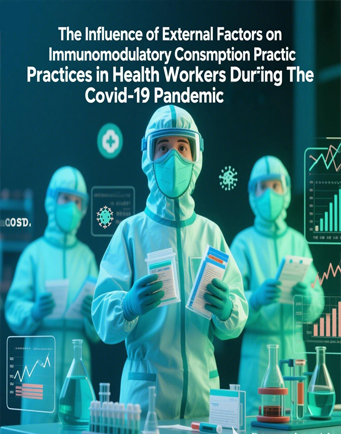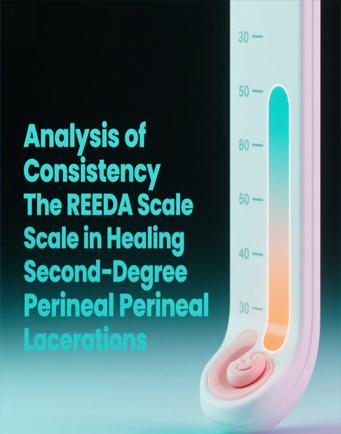Sensory Evaluation and Nutritional Quality of Corn Tortilla Enriched with Moringa Seed Flour
Downloads
One of the agricultural product processing industries currently being developed in East Nusa Tenggara is corn. Corn has a relatively high nutritional content, thus it possesses economic value for the community. One of the snack products from corn is tortilla. The tortillas can be modified with other food ingredients that contain good nutrition to increase its nutritional value. Moringa seeds contain carbohydrates, fats and proteins. Hence, moringa seeds can be an alternative food source of a new protein which is able to overcome protein deficiency, particularly in East Nusa Tenggara. The experiment was designed by Completely Randomized Design (CRD) with several formulas for substitution of corn flour with moringa seed flour, which were: P1 (100%: 0%), P2 (95%:5%), P3 (90%:10%), and P4 (85%:15%). An organoleptic test was administered to determine the panelists' preference for tortilla formulas and a proximate test to examine the nutritional value of tortillas. The results of the organoleptic test revealed that corn tortilla substituted with moringa seed flour up to 20% owned a significant effect on the color, aroma, taste and texture of the tortilla with a p-value <0.05. The proximate test results presented that tortillas with moringa seed flour substitution possessed a significant effect on protein, fat, carbohydrate, water, ash and fibre content of tortilla with a p-value <0.05.
Adu, C. P., Benu, F. L., & Pellokila, M. R. (2020). Kajian Ekonomi Produk Olahan Jagung (Studi Kasus) Di Industri Rumah Tangga Kanaan Di Kelurahan Tuak Daun Merah Kecamatan Oebobo Kota Kupang. Buletin Ilmiah IMPAS, 21(1), 8-16. https://doi.org/10.35508/impas.v21i01.2605
Arif, S., Isdijoso, W., Fatah, A. R., & Tamyis, A. R. (2020). Tinjauan Strategis Ketahanan Pangan dan Gizi di Indonesia: Informasi Terkini 2019-2020. Jakarta: SMERU Research Institute.
Badan Standarisasi Nasional. (1996). Jagung marning (SNI 01-4300-1996). Jakarta: Badan Standarisasi Nasional.
Badan Standarisasi Nasional. (1992). Keripik Tempe Goreng (SNI 01-2602-1992). Jakarta: Badan Standarisasi Nasional.
Compaoré, W. R., Nikièma, P. A., Bassolé, H. I. N., Savadogo, A., & Mouecoucou, J. (2011). Chemical composition and antioxidative properties of seeds of Moringa oleifera and pulps of Parkia biglobosa and Adansonia digitata commonly used in food fortification in Burkina Faso. Current Research Journal of Biological Sciences, 3(1), 64-72.
Guzmán-Soria, D., Taboada-González, P., Aguilar-Virgen, Q., Baltierra-Trejo, E., & Marquez-Benavides, L. (2019). Environmental Impact of Corn Tortilla Production: A Case Study. Applied Sciences, 9(22), 4852. https://doi.org/10.3390/app9224852
Istiqomaturrosyidah, I., & Murtini, E. S. (2021). Inovasi Rengginang Sebagai Pangan Sumber Serat dengan Penambahan Rumput Laut Undari pinnatifida. Pro Food (Jurnal Ilmu dan Teknologi Pangan), 7(1), 812-820. https://doi.org/10.29303/profood.v7i1.169
Karneta, R., Kahfi, A. N., & Aluyah, C. (2018). Fortifikasi dari kedelai (Glicine max L Merr) pada formula tortilla jagung. Seminar Nasional Lahan Suboptimal (pp. 465-472).
Kementerian Kesehatan Republik Indonesia. (2018). Laporan Nasional RISKESDAS 2018. Jakarta: Badan Penelitian dan Pengembangan Kesehatan, Kementerian Kesehatan Republik Indonesia.
Lubis, R. H., Ginting, S., & Yusraini, E. (2021). Effect of gelatine addition and storage time on the quality of semur seasoning pasta. IOP Conference Series: Earth and Environmental Science, 782(032084), 1-7. https://doi.org/10.1088/1755-1315/782/3/032084
Meliza, M., Lubis, Y. M., & Fahrizal, F. (2019). Pengaruh Penambahan Jenis Tepung dan Perbandingan Kosentrasi Bubur Jagung (Zea Mays L.) dan Ampas Wortel (Daucus Carota L.) terhadap Tortilla Chips Mutu Sensori. Jurnal Ilmiah Mahasiswa Pertanian, 4(4), 329-336. https://doi.org/10.17969/jimfp.v4i4.12771
Muchtadi, T. R., & Ayustaningwarno, F. (2010). Teknologi Proses Pengolahan Pangan. Bandung: Alfabeta.
Nour, A. A. M., Mohamed, A. R., Adiamo, O. Q., & Babiker, E. E. (2018). Changes in protein nutritional quality as affected by processing of millet supplemented with Moringa seed flour. Journal of the Saudi Society of Agricultural Sciences, 17(3), 275-281. https://doi.org/10.1016/j.jssas.2016.05.006
Nurhayati, N., Setyabudi, F., Marseno, D., & Supriyanto, S. (2019). The Effects of Roasting Time of Unfermented Cocoa Liquor Using the Oil Bath Methods on Physicochemical Properties and Volatile Compound Profiles. agriTECH, 39(1), 36-47. doi: https://doi.org/10.22146/agritech.33103
Ogunsina, B. S., & Radha, C. (2010). Comparative Study Of The Functional And Physico-Chemical Properties Of Debittered Moringa Seeds And Soybeans Flours. Ife Journal of Technology, 19(1), 85-92. Retrieved from: http://ijt.oauife.edu.ng/index.php/ijt/article/view/54
Ogunsina, B. S., Radha, C., & Indrani, D. (2011). Quality characteristics of bread and cookies enriched with debittered Moringa oleifera seed flour. International Journal of Food Sciences and Nutrition, 62(2), 185-194. https://doi.org/10.3109/09637486.2010.526928
Ogunsina, B. S., Radha, C., & Govardhan Singh, R. S. (2010). Physicochemical and functional properties of full‐fat and defatted Moringa oleifera kernel flour. International journal of food science & technology, 45(11), 2433-2439. https://doi.org/10.1111/j.1365-2621.2010.02423.x
Olagbemide, P. T., & Alikwe, P. C. (2014). Proximate analysis and chemical composition of raw and defatted Moringa oleifera kernel. Advances in Life Science and Technology, 24, 92-99.
Pires, M. A., Pastrana, L. M., Fuciños, P., Abreu, C. S., & Oliveira, S. M. (2020). Sensorial perception of astringency: Oral mechanisms and current analysis methods. Foods, 9(8), 1124. https://doi.org/10.3390/foods9081124
Rabie, M. M., Ibrahim, F. Y., Youssif, M. R. G., & Ezz El-Ragal, N. M. (2020). Effect of Moringa oleifera leaves and seeds powder supplementation on quality characteristics of cookies. Journal of Food and Dairy Sciences, 11(2), 65-73. https://doi.org/10.21608/jfds.2020.78888
Rahmawati, R., Wahyuni, F., & Hariati, N. W. (2018). Pengaruh Substitusi Tepung Jamur Tiram Terhadap Daya Terima Dan Kandungan Gizi Mi Kering (The effect of oyster mushrooms flour substitution to the acceptance and nutrient content of dried noodles). Jurnal Dunia Gizi, 1(2), 119-126. https://doi.org/10.33085/jdg.v1i2.3811
Saa, R. W., Fombang, E. N., Ndjantou, E. B., & Njintang, N. Y. (2019). Treatments and uses of Moringa oleifera seeds in human nutrition: A review. Food science & nutrition, 7(6), 1911-1919. https://doi.org/10.1002/fsn3.1057
Siyuan, S., Tong, L., & Liu, R. (2018). Corn phytochemicals and their health benefits. Food Science and Human Wellness, 7(3), 185-195. https://doi.org/10.1016/j.fshw.2018.09.003
Tu, X. H., Wu, B. F., Xie, Y., Xu, S. L., Wu, Z. Y., Lv, X., ... & Chen, H. (2021). A comprehensive study of raw and roasted macadamia nuts: Lipid profile, physicochemical, nutritional, and sensory properties. Food Science & Nutrition, 9(3), 1688-1697. https://doi.org/10.1002/fsn3.2143
Copyright (c) 2022 JURNAL INFO KESEHATAN

This work is licensed under a Creative Commons Attribution-NonCommercial-ShareAlike 4.0 International License.
Copyright notice
Ownership of copyright
The copyright in this website and the material on this website (including without limitation the text, computer code, artwork, photographs, images, music, audio material, video material and audio-visual material on this website) is owned by JURNAL INFO KESEHATAN and its licensors.
Copyright license
JURNAL INFO KESEHATAN grants to you a worldwide non-exclusive royalty-free revocable license to:
- view this website and the material on this website on a computer or mobile device via a web browser;
- copy and store this website and the material on this website in your web browser cache memory; and
- print pages from this website for your use.
- All articles published by JURNAL INFO KESEHATAN are licensed under the Creative Commons Attribution 4.0 International License. This permits anyone to copy, redistribute, remix, transmit and adapt the work provided the original work and source is appropriately cited.
JURNAL INFO KESEHATAN does not grant you any other rights in relation to this website or the material on this website. In other words, all other rights are reserved.
For the avoidance of doubt, you must not adapt, edit, change, transform, publish, republish, distribute, redistribute, broadcast, rebroadcast or show or play in public this website or the material on this website (in any form or media) without appropriately and conspicuously citing the original work and source or JURNAL INFO KESEHATAN prior written permission.
Permissions
You may request permission to use the copyright materials on this website by writing to jurnalinfokesehatan@gmail.com.
Enforcement of copyright
JURNAL INFO KESEHATAN takes the protection of its copyright very seriously.
If JURNAL INFO KESEHATAN discovers that you have used its copyright materials in contravention of the license above, JURNAL INFO KESEHATAN may bring legal proceedings against you seeking monetary damages and an injunction to stop you using those materials. You could also be ordered to pay legal costs.
If you become aware of any use of JURNAL INFO KESEHATAN copyright materials that contravenes or may contravene the license above, please report this by email to jurnalinfokesehatan@gmail.com
Infringing material
If you become aware of any material on the website that you believe infringes your or any other person's copyright, please report this by email to jurnalinfokesehatan@gmail.com.





































